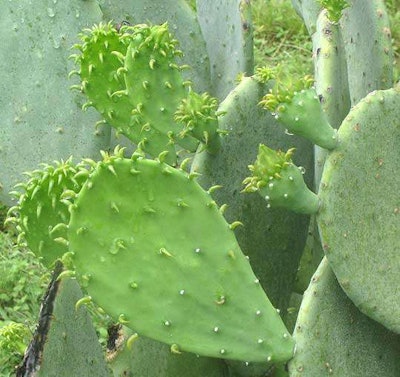 If you’re driving through Texas, be on the lookout for prickly pear cacti.
If you’re driving through Texas, be on the lookout for prickly pear cacti.The Texas Department of Transportation (TxDOT) and the City of Lakeway, Texas, are at work on a pilot project that includes the use of native plants and grasses to improve both the aesthetics and water efficiency of highway landscapes statewide.
The project, which has begun along RM 620 between Flintrock Trace and Lohmans Spur, is part of the Green Ribbon Fund program, which was established to beautify highway corridors through landscape and architectural improvements while promoting and enhancing highway safety. (Incidentally, in Texas, the RM prefix in road designations stands for “ranch-to-market.”)
TxDOT is planting a mix of spineless prickly pear cacti and hardy native plants, such as Mountain Laurels, which are suited for extreme rocky conditions. The department is also putting in various native grasses to help hold the soil in place.
About two years of regular maintenance will be required to ensure the plants become established along the highway; but, once they are, the landscaping work will go a long way toward preventing erosion.
“It’s not a huge project, but it’s a challenging one,” says Kerry Blackmon, TxDOT’s landscape architect for the Austin district, in an interview with the Statesman. “As water resources are getting tighter, this is a challenge to see if we can find plants and means and methods to get these to grow so we are not left with desert conditions.”










